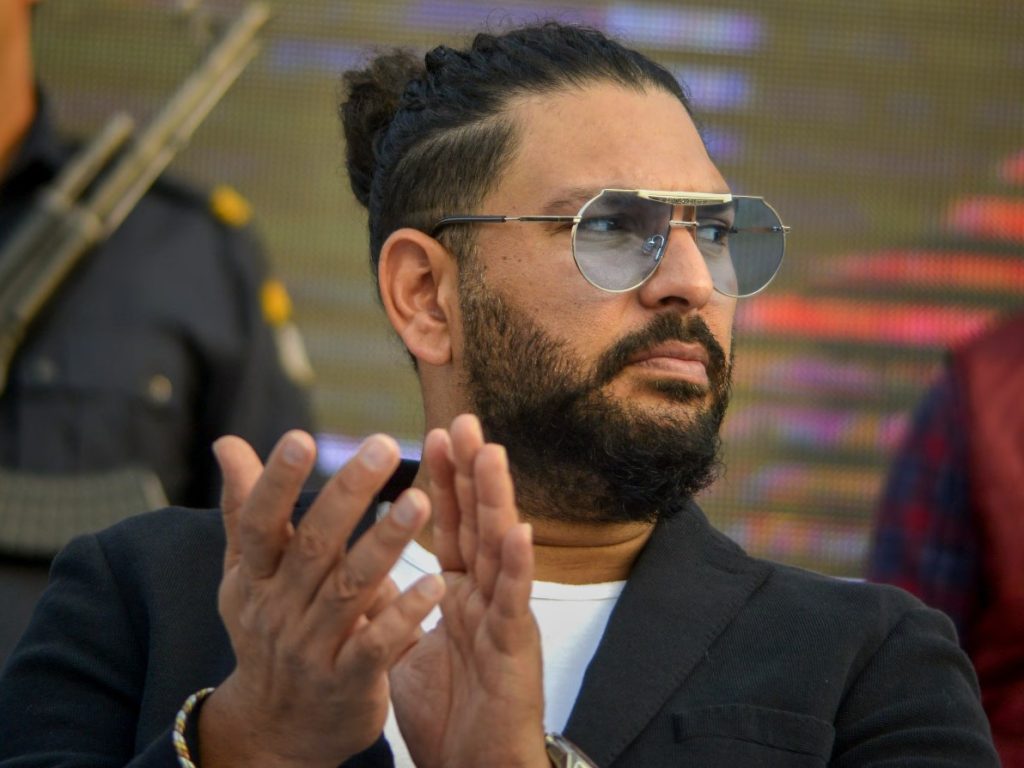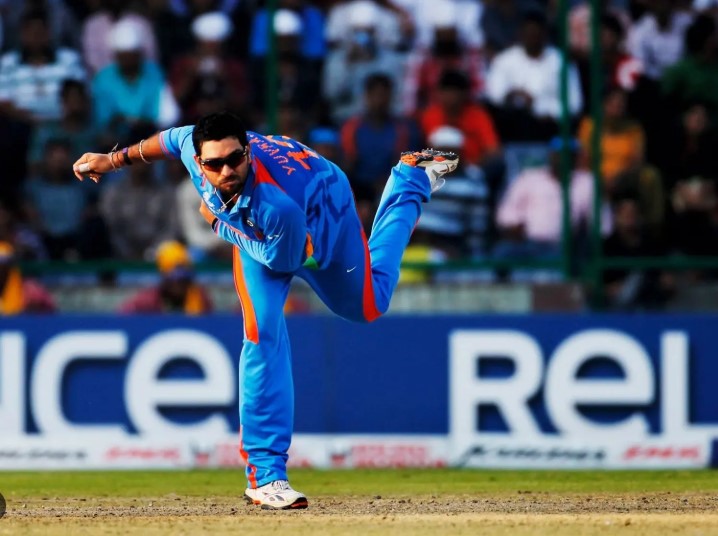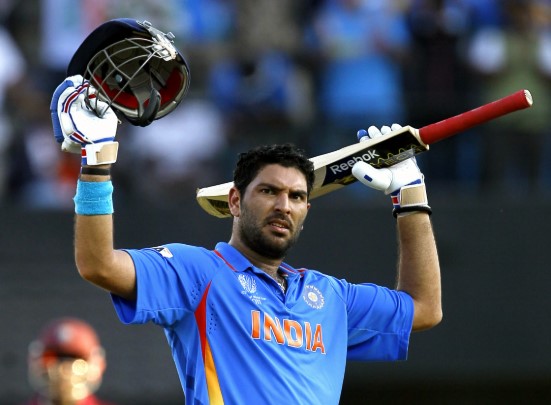Yuvraj Singh: Yuvraj Singh’s journey in international cricket is nothing short of inspirational. From his breakthrough performances in the 2000s to his historic match-winning knocks in ICC tournaments, Yuvraj Singh became a household name and a hero for millions of Indian cricket fans. His aggressive batting, all-round capabilities, and fiery spirit on the field made him one of the most impactful players in Indian cricket history. However, despite his immense talent, Yuvraj Singh’s career went through a significant downturn in the latter part of his career. While his rise to prominence was meteoric, the challenges he faced toward the end of his career led to an inevitable decline.
Early Glory And Rising To Stardom

Yuvraj Singh’s career started on a high note. After making his debut in 2000, he quickly became a key member of the Indian cricket team. Known for his aggressive batting and powerful stroke play, Yuvraj was an asset, particularly in limited-overs cricket. His match-winning performances in the 2007 ICC T20 World Cup, where he was instrumental in helping India win the inaugural tournament, and the 2011 ICC Cricket World Cup, where he was named Player of the Tournament, are legendary.
Yuvraj Singh’s Key Career Stats (ODIs)
| Format | Matches Played | Runs | Average | 100s | 50s | Wickets | Bowling Average |
|---|---|---|---|---|---|---|---|
| ODIs | 304 | 8701 | 36.55 | 14 | 52 | 36 | 44.77 |
| T20Is | 58 | 1177 | 29.06 | 0 | 6 | 28 | 29.14 |
Yuvraj’s ability to win games with both bat and ball made him an invaluable all-rounder for India, especially in ICC tournaments. However, the challenges that led to his career decline were waiting around the corner.
Health Issues And The Battle With Cancer
One of the biggest factors contributing to the downfall of Yuvraj Singh’s career was his health. In 2011, just after the culmination of India’s historic World Cup win, Yuvraj Singh was diagnosed with a rare form of cancer known as mediastinal seminoma, which is a type of cancer affecting the chest area. He underwent intensive treatment and chemotherapy, which kept him away from cricket for a prolonged period.
Though Yuvraj’s recovery and subsequent return to cricket in 2012 was nothing short of miraculous, the physical toll of his treatment, combined with the emotional and psychological strain of battling cancer, had a significant impact on his form and fitness. Despite making a comeback, the period of recovery had affected his physical fitness, and he was never able to regain his peak form.
Struggles With Fitness Post-Illness

Post his battle with cancer, fitness became a recurring issue for Yuvraj Singh. While he had always been known for his athleticism on the field, the grueling treatment had taken a toll on his body. The lack of fitness affected his ability to field at his best, an area where Yuvraj had previously excelled.
His sluggishness on the field and the loss of agility that had once been one of his strengths began to hinder his overall impact. As cricket became more fitness-oriented with every passing year, Yuvraj found it increasingly difficult to meet the demanding physical standards of international cricket.
Yuvraj Singh’s Performance After His Cancer Treatment
| Year | Matches Played | Runs | Average | Wickets | Key Performances |
|---|---|---|---|---|---|
| 2012 | 5 | 105 | 21.00 | 0 | Struggled to find form post-cancer recovery, with limited impact |
| 2013 | 24 | 522 | 34.80 | 0 | A brief resurgence, with sporadic good performances |
| 2014 | 16 | 325 | 40.63 | 0 | His performances were inconsistent but still useful at times |
| 2015-2016 | 16 | 374 | 24.93 | 2 | A decline in form and reduced contributions in ODIs |
While Yuvraj was able to provide moments of brilliance, he could not sustain consistent performances at the highest level, and his fitness remained an ongoing issue. The pressure to perform in a more demanding fitness environment, combined with his reduced physical capabilities, eventually became a significant obstacle in his career.
Decline In Batting Form

Another reason for the downturn in Yuvraj Singh’s career was his declining batting form. As time passed, Yuvraj’s natural flair for the game seemed to fade. His aggressive stroke play became less frequent, and his ability to accelerate in the middle overs dwindled. His lack of consistency led to doubts about his place in the team, especially in limited-overs formats.
Yuvraj’s struggles to adapt to changing cricketing trends, where faster, more aggressive batsmen were being sought after, further isolated him from the team dynamics. The rise of younger players such as Virat Kohli and Suresh Raina meant that Yuvraj, despite his legacy, was finding it hard to maintain a spot in the playing eleven.
Rising Competition And Changing Roles
The Indian team, especially after the 2011 World Cup, began to undergo a period of transition. With the emergence of younger, more consistent players, Yuvraj’s position in the team became increasingly vulnerable. His batting, once aggressive and free-flowing, became more cautious. He struggled to find his rhythm against the rising competition and found himself being left out of the squad for significant tournaments.
The increasing emphasis on youth and the emergence of players who could fit into the newer roles led to Yuvraj’s exclusion from the team. With the rise of power hitters such as MS Dhoni, who was an established finisher, and the aggressive younger players, the middle-order role, where Yuvraj had previously thrived, became highly competitive.
Lack Of Opportunities And Team Selection
Yuvraj Singh’s downfall was also partly due to the changing selection policies of the Indian team. Despite his immense experience and legacy, Yuvraj struggled to find consistent opportunities in the Indian lineup. The team management’s increasing focus on youth and performance during the 2010s, combined with the rise of players like Virat Kohli, who could play in similar positions, meant that Yuvraj struggled to secure a place in the team.
While he was still occasionally called up for series or tournaments, he was often benched or not given a consistent run in the playing eleven, further diminishing his chances of returning to his peak form. Yuvraj’s batting style, once aggressive and destructive, seemed out of place in an era where the focus was on fast, consistent scoring from the middle order.

Final Years And Retirement
In 2017, after years of inconsistency and injuries, Yuvraj Singh was dropped from the Indian team for the shorter formats of the game. Despite his history and contributions, he failed to make a comeback into the team. The selectors chose to focus on the future and the youth, and as a result, Yuvraj was not selected for the 2019 World Cup. It became clear that his career was nearing its end.
A Legacy Despite The Downfall
Yuvraj Singh’s downfall is a story of a talented cricketer who battled against the odds, but whose career was ultimately shaped by a combination of health issues, fitness struggles, and changing team dynamics. While his career may have faltered in the latter stages, his impact on Indian cricket will never be forgotten. From his explosive batting to his crucial all-round performances in ICC tournaments, Yuvraj Singh remains one of India’s greatest match-winners.
Though his career faced a decline in the latter years, Yuvraj’s legacy as a hero of the 2007 T20 World Cup and the 2011 World Cup will continue to inspire future generations of cricketers. The challenges he faced—be it health or competition—only serve to highlight the resilience he displayed during his career. Despite the downfall, Yuvraj Singh remains an iconic figure in Indian cricket.

